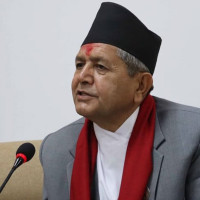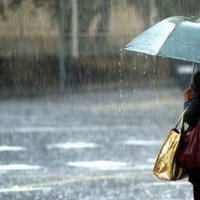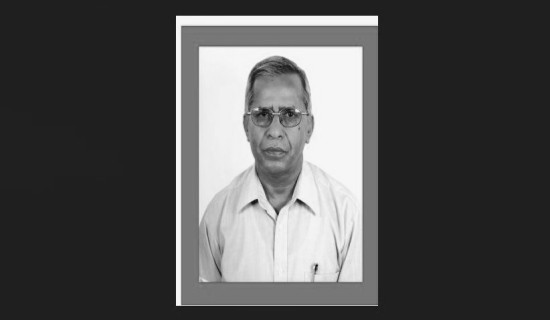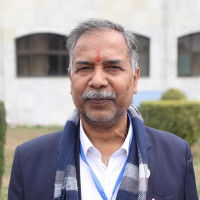- Saturday, 31 May 2025
Ganatantra, 17, and still a long way to go
By Pallav Bhusal,Kathmandu, May 27: It was seventeen years ago when tens of thousands of Nepali people marched in the streets demanding for Loktantra and an end to the autocratic royal rule.
Known as the April Uprising of 2006 or the Jana Andolan II, the 19-day peaceful demonstrations culminated in establishing a democratic republic by ending the monarchical rule.
The first Constituent Assembly elected in 2008 as per the demand of the political movement of 2006 formally abolished the 240-year-old monarchy from Nepal. The nation is marking the 17th year of the historic day on Tuesday.
Before the 2006 movement, Nepal was marred by a decade-long armed conflict waged by the Maoists, political instability, and oppressive rule. The monarchy, under former King Gyanendra, had curtailed democratic freedoms, dissolved the parliament, and assumed direct control over the government, leading to widespread discontent. The people’s frustrations were so high that they overthrew not only the monarchy but also ended the conflict through the peaceful protests.
Khim Lal Devkota, former Constituent Assembly member, senior advocate and central committee member of the CPN Maoist (Centre), reflected on the importance of this unity. “Our coalition with other political forces was crucial. It demonstrated that when the people’s interests are at stake, ideological differences can be set aside. The revolution was a testament to the power of unity and people’s sovereignty. It brought out rights and freedom to the people and obliterated the oppressive system,” he said.
Nonetheless, Devkota, a member of the Interim Constitution Drafting Committee, conceded that the benefits of democracy have yet to trickle down to the common populace. “Political instability and a drought of leadership have hindered the realization of true democracy for the people,” he remarked.
A unique aspect of the 2006 movement was the unity among diverse political factions. The Seven Party Alliance (SPA) and the Maoist rebels set aside their differences to fight the common front – the monarchy. This coalition was a powerful symbol of the people’s collective will and determination to achieve democratic reform.
Sarita Prasain, a Member of Parliament from the Nepali Congress, underscored the crucial role played by political parties during the movement. “The parties and their cadres were the backbone of the revolution. Their energy, creativity, and resolve were instrumental in bringing about the change we see today. It was the future of the youth we were fighting for,” she said.
Despite the pivotal role of the revolution in establishing federalism, ongoing political instability is leading the nation towards systemic failure. Prasain expressed concern, stating, “While democracy was achieved for the people, there are numerous instances of people being scammed. The federal parliament is not functioning properly, and I fear whether this could result in a breakdown of democracy and federalism.”
The youth and civil society organisations were at the forefront of the revolution. Young activists and students organised mass protests, strikes, and rallies, demonstrating immense courage and determination. Their participation was crucial in sustaining the momentum of the movement and keeping the demands for democracy alive.
Ram Kumari Jhakri, a prominent figure during the revolution, recalls the oppressive atmosphere before the movement. “Nepal was a place where voices for change were silenced, and the monarchy ruled with an iron fist. There was no space for democratic dialogue or civil liberties,” she said.
The most significant outcome of the 2006 movement was the declaration of Nepal as a federal democratic republic. The monarchy was made dysfunctional, and the interim constitution was adopted in 2007, laying the groundwork for a new political era. The movement also led to the inclusion of marginalised communities in the political process, recognising the rights of various ethnic, gender, and social groups.
“The people’s revolution was a fight for dignity, equality, and democratic values. It was a collective voice against autocracy and a step towards a just society. It set the foundation for a democratic Nepal. Our task now is to build on that foundation and ensure that democracy delivers justice and prosperity for all,” said Jhakri, highlighting the transformative impact of the movement.
Jhankri further said that the issue of democracy was due to the dilemma faced by the political institutions, who, despite advocating for system change, struggled to reach a consensus on the extent of reforms.
The media played a crucial role in the success of the revolution. Journalists, despite facing threats and censorship, reported on the protests and state crackdowns, bringing international attention to Nepal’s struggle for democracy. Their efforts ensured that the global community was aware of the Nepalese people’s fight for freedom and justice.
Bishnu Nisthuri, former President of the Federation of Nepali Journalists, who was at the forefront during the April 2006 Uprising, highlighted the media’s contribution. “The media was the voice of the voiceless during the revolution. Despite the threats and censorship, journalists continued to report the truth. Our efforts ensured that the world knew about the people’s fight for freedom,” he said.
Nisthuri stressed that there was no need to panic regarding the potential failure of democracy and federalism. “Political parties and their leaders should prioritise serving the people, safeguarding their rights, and fostering economic prosperity through the effective functioning of the federal structure and adherence to the constitution,” he emphasized.
The 2006 Democracy Movement remains a landmark event in Nepal’s history. It eliminated a monarchy and established a federal democratic republic, paving the way for political and social reforms. However, Nepal still faces challenges. Political instability, corruption, and social inequality remain pressing issues. The constitution promulgated in 2015 was a step forward, but its implementation and the genuine inclusion of all marginalised groups are ongoing struggles.


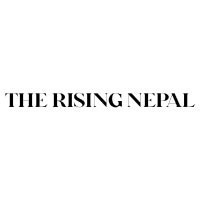
-original-thumb.jpg)
